PIcture credit: Aleph Blog, and the same for all the graphs and charts in this post. All liability for mistakes here is mine.
This post is different than any other I have done at Aleph Blog. I will try to write this in a nice way even though it is a strong and out-of-consensus opinion on a topic that many are edgy about.
I realize I might be wrong here, but I will present to you what I think, along with what I think are the limitations of my analysis. Part of my reason for writing this is that I think that most of the reporting on COVID-19 is subject to a bias common in our culture among politicians, lawyers, bureaucrats, and the media: an extreme bias toward safety because the costs of being wrong on the optimistic side are high than the rewards for being right. (Example: NOAA overpredicts disasters, and so do most hurricane forecasters.)
This post will be structured like this:
- Summary of findings and recommendations
- Limitations of the analysis
- Breaking down the results by groups of countries
- A discussion of the “Second Wave,” with policy recommendations
- Closing comments
- Appendix for math nerds
Summary of findings and recommendations
- The First Wave of the crisis will pass more quickly than most expect. Most countries with a large number of COVID-19 cases will have 99% of their First Wave cases reported by mid-April.
- Of the 13 countries with the most cases of COVID-19, the least of them has reported 41% of their likely First Wave cases. Of those same nations, none are expected to have more than 0.3% infected with COVID-19.
- The real challenge will come in dealing with the Second Wave of the crisis. How do governments deal with a smallish number of new cases, and keep them from growing into a new epidemic?
- In the Second Wave, governments should selectively tell some to stay home, while telling most people to get about their normal work.
- Quarantine those who are sick with COVID-19 and those who have been with them, until they are tested and have a negative result. Continue to disallow international travel, or insist on a two week quarantine upon returning.
- Let healthy people return to their work. All businesses are necessary businesses.
- Avoid bizarre stimulus programs that are harmful in the long run. Tell the Fed that monetary policy can’t solve everything, and not to play favorites.
Limitations of the analysis
- I am not a public health specialist. I am a statistician with a background in econometrics, which has its similarities with biometrics.
- My analysis assumes that processes for finding new cases of COVID-19 are constant, or mostly so. That is not always true — an example is when China announced a large amount of new cases all at once.
- I use an inverse logistic curve for my analysis. All functional forms have their limitations, and for the nations analyzed as of this date, the minimum pseudo-R-squared is 79.4%, and the highest is 98.5%. That said, this is a common functional form for epidemics.
- The model assumes that there is one wave. That will not prove to be true, as can be seen from China and South Korea.
- All sorts of things can go wrong that are not in the data now — mutations, civil disobedience, large bureaucratic errors, large policy errors, etc.
Analysis By Group
Those that are though the First Wave
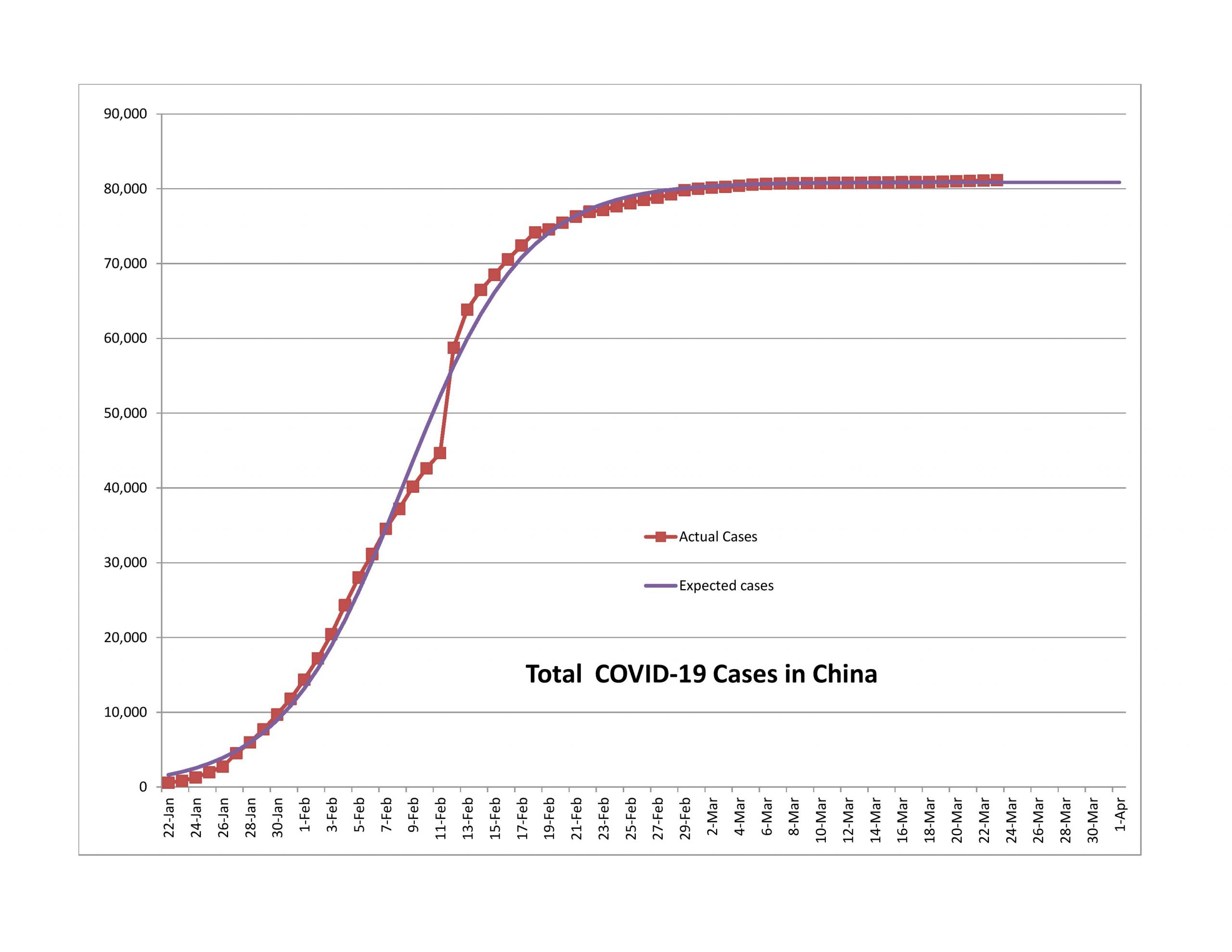
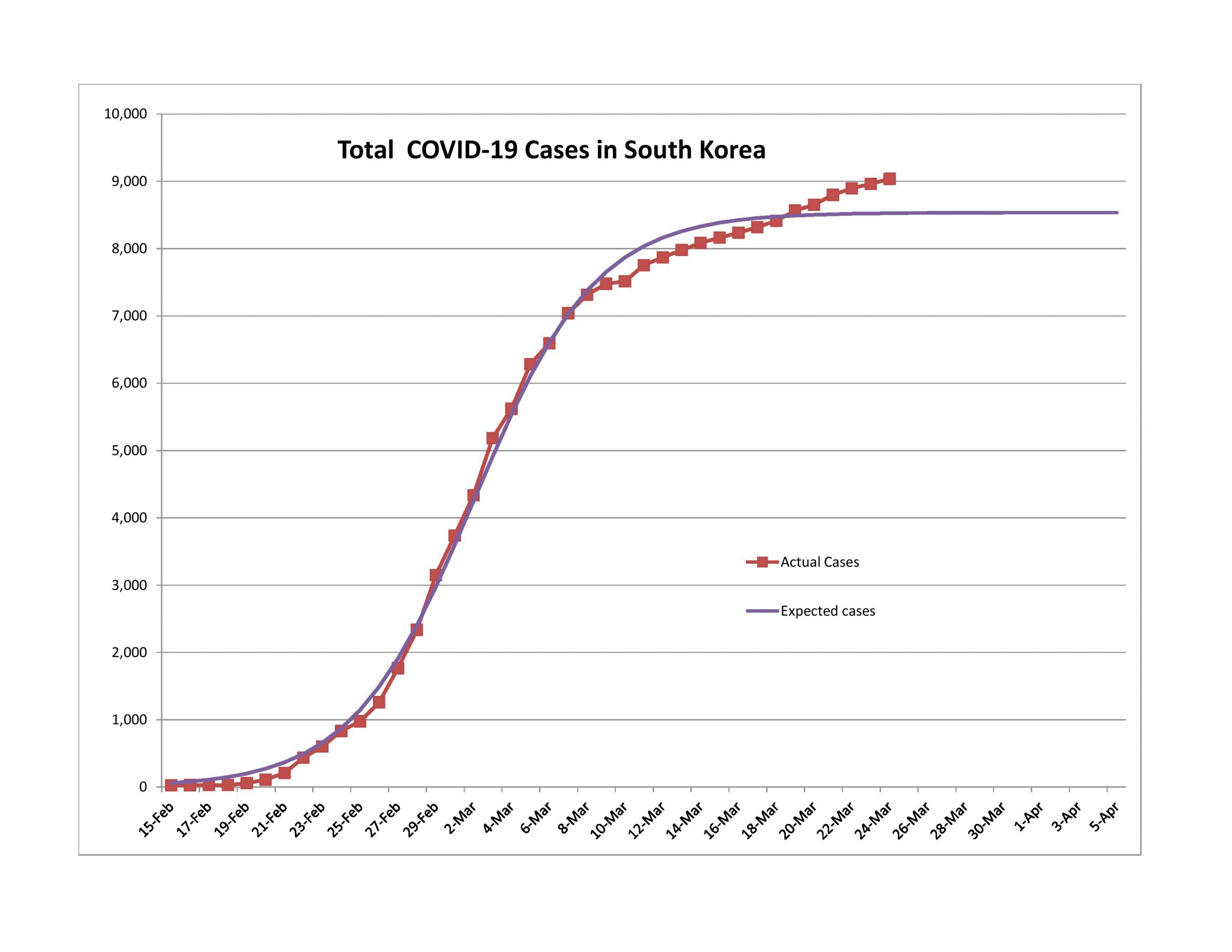
We have two in this group: South Korea and China. I don’t trust China’s data. In each case, though, you have the First Wave go through their nation and burn out, followed by an excess number of new cases where the public health authorities may not be catching up with what could be the Second Wave. I’ll talk more about the Second wave below.
The unusual case of Iran
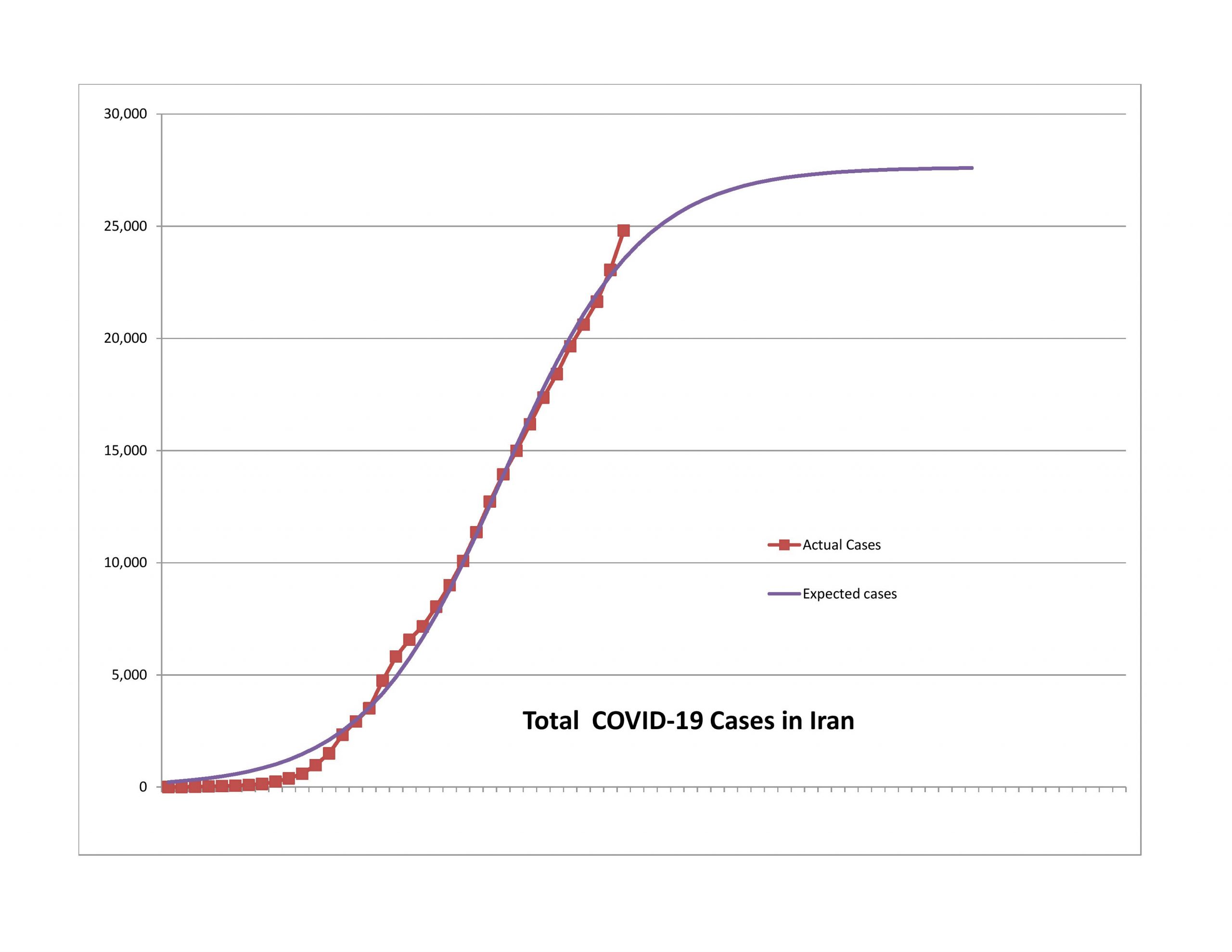
Really, I don’t know what is going on in Iran on COVID-19 but it looks like the initial new cases started to slow down, and then they let up on restrictions too soon. New cases hit a new high yesterday, which doesn’t fit the paradigm of a consistent response the the crisis. COVID-19 seem to be out of control in Iran.
Those that are close to done
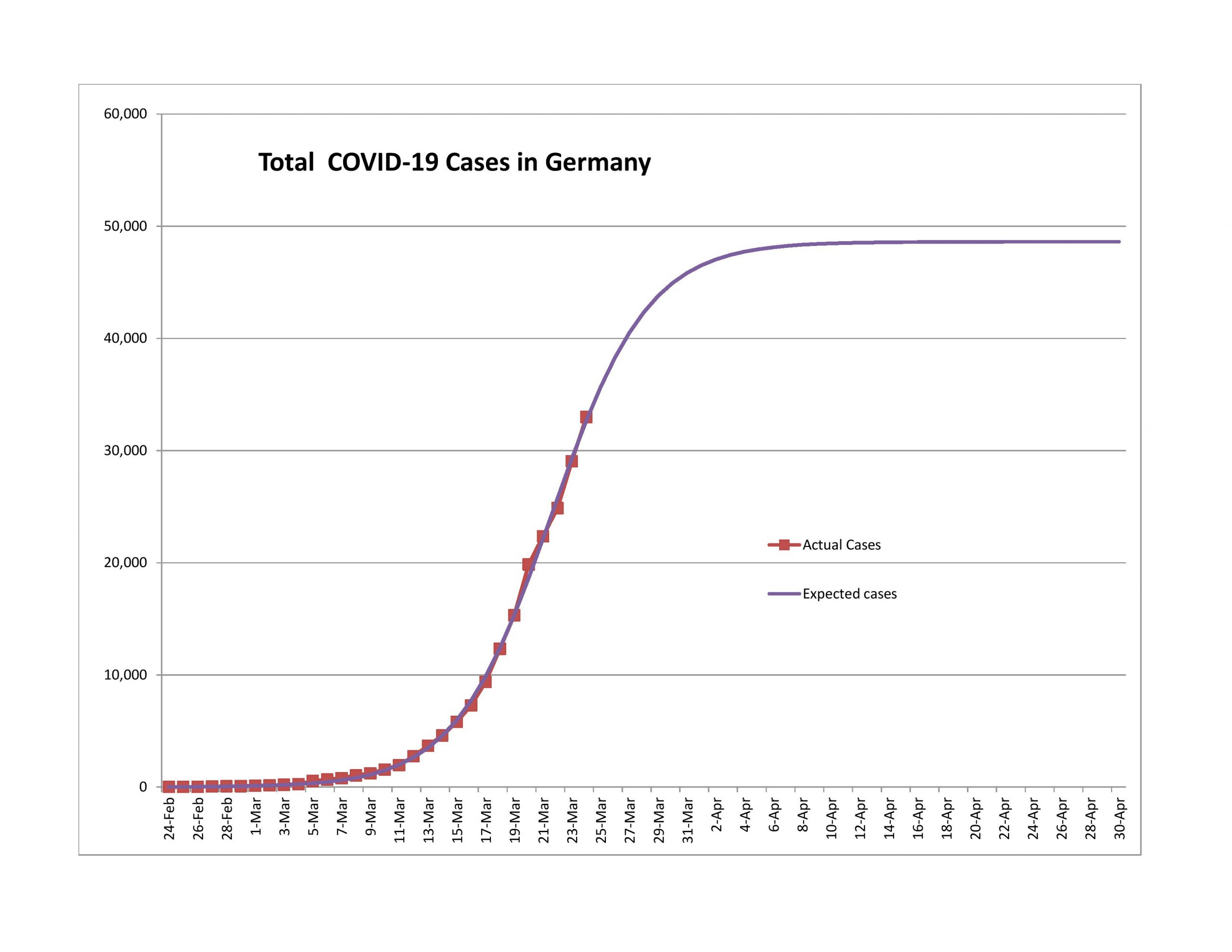

Italy and Germany are past the halfway mark in the epidemic, and are having lower new cases on average daily.
In general, the policy responses of a nation influence the amount of the population subject to infection, and the ability of the infected to interact with the broader society.
The rest



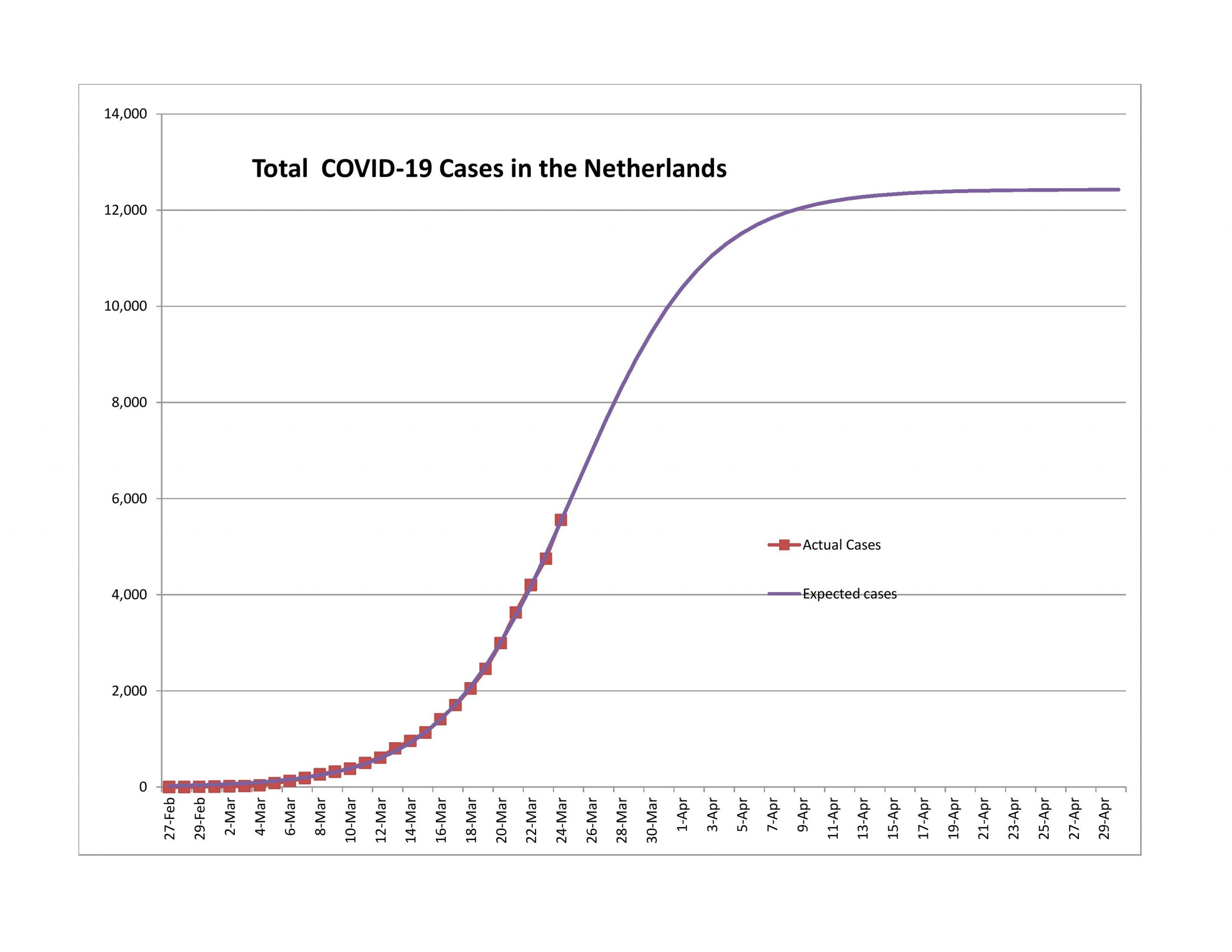
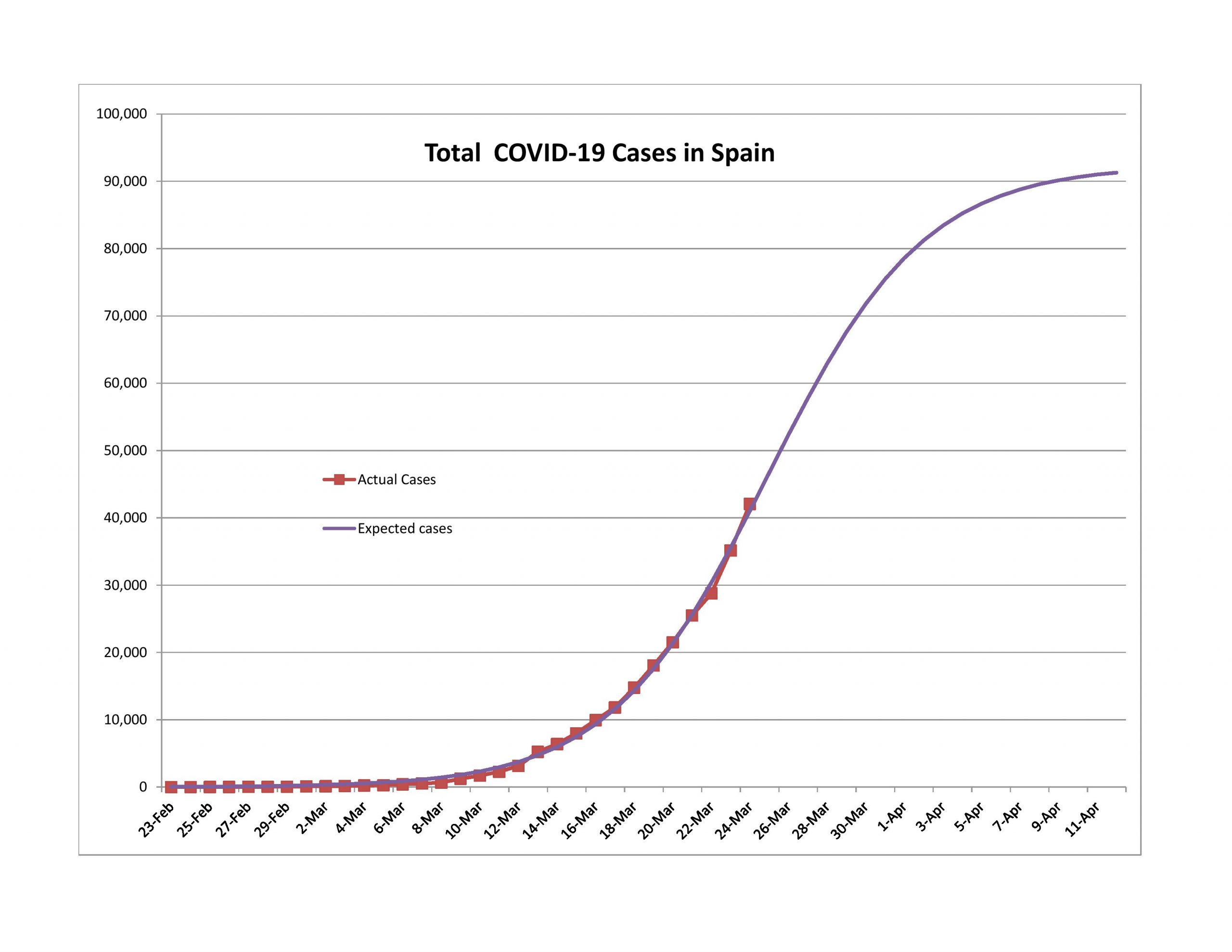

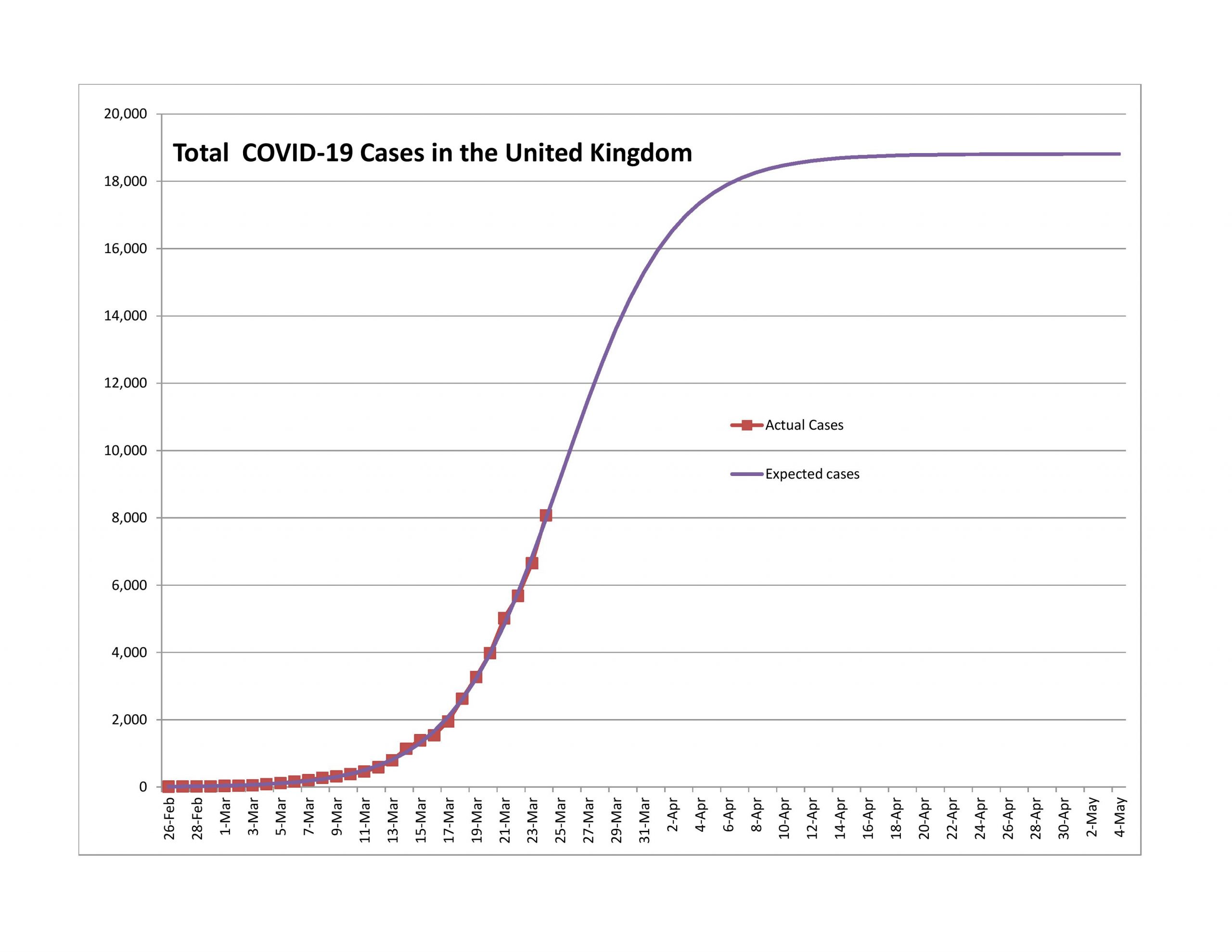
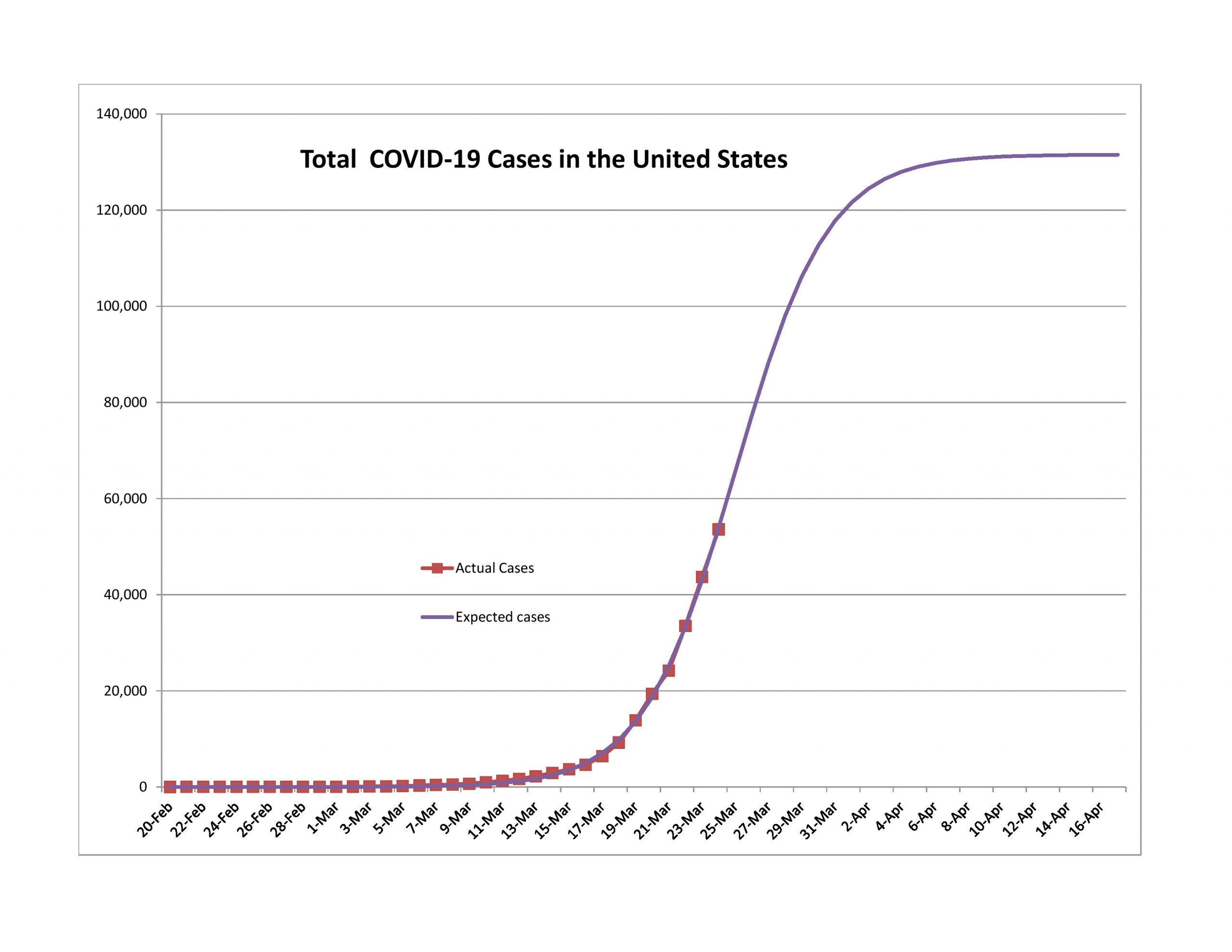
These are the nations that have not certainly passed the 50% mark as of today as I estimate the infection. As I have watched this develop over the last week, the most difficult aspect of estimation comes when you are near the halfway point. Small changes in actual new cases make a big difference in estimated new cases. An example is the United States, who has had significantly lower new cases than expected for a preponderance of the last week. The US got off to a slow start in its reaction to the crisis, but seemingly has caught up and then some.
WIth these countries, the odds of being wrong is the highest. Thus all conclusions with them must be considered tentative. But with so many of them following nearly the same pattern, despite very different responses to the crisis, gives more certainty to this analysis.
A discussion of the “Second Wave,” with policy recommendations
When you look at the data of CHina and South Korea, you see how the epidemic went through the s-curve, and then has persistently high new cases thereafter. I call this the “Second Wave.” Iran seems to be a case where their society inadequately stops transmission, and so instead of following an s-curve of an exponential, it seems to keep increasing in a way that is almost quadratic — slow but steady.
This will be the grand problem for most countries. How do you eradicate the virus after you have had large success in interrupting its transmission? Looking at the relative success of South Korea in the First Wave I would say that you do the following:
- Test and quarantine aggressively.
- Of those who test positive for COVID-19, quarantine all of their contacts, and test them. Continue quarantine for those who test positive, and quarantine/test their contacts as well. Repeat as needed.
- But don’t quarantine everyone. Let those who are healthy work. Encourage those who are old or have compromised immune systems to stay home for the duration of the crisis, and give some assistance to them.
- Don’t assist all of society because that is way too expensive and not needed — get them back to work. Don’t give into the idea of denying people work and then offering meager assistance. It is an inferior idea for those who are healthy.
- This applies to the actions of the Federal Reserve as well — don’t harm the value of capital by artificially creating more capital that has no earnings capacity.
Closing comments
This analysis shows the the slowest of the nations written about here is passing the middle of the crisis quite rapidly, and the practical end of the crisis is in mid-April, when 99% of all First Wave new cases will have been realized. The real challenge will come in dealing with the cases after that, which will be sporadic and localized. How do we keep that from becoming a semi-permanent bother to the world, because the cost of putting life on hold is high, as is the cost of losing lives.
Quarantining and testing aggressively is the best solution, together with letting the healthy work. This should be the guiding star for all policymakers, because we need to strike the right balance between breaking the social connections that lead to disease transmission, and allowing people to labor to support themselves. We are not trying to save the financial markets; we are trying to protect people who work.
Appendix for math nerds

The above was how I structured my analysis. It followed a logistic curve, which has the following benefit: infections begin exponentially, but get retarded by two factors: one is that even if people do almost nothing as in 1918, the uninfected population shrinks, which blunts further growth. Second, people act to blunt further growth. They separate themselves from each other, and particularly those who are infected. This is is akin to removing fuel from the fire.
The logistic curve has a number of advantages for estimation. It notices the slowing down of the percentage growth in total cases, while media and politicians continue to panic.
Remember that that the media and politicians selfishly like to maximize their influence, and try to create panics — it is good for them to maximize fear. The same is true for many in public health. Truly, we should spend more on public health, but it is one of those things that governments naturally neglect… because they are short-sighted, and will not spend money on something the lowers risk, but does not bring any present good. (Note to Christians: in the Old Testament public health was a function of their government via the priests. It should be a normal function of government to deal with contagion.)
Final note: I did not write this with Donald Trump in mind. I did not vote for him and will not vote for him. That said, he is on the right track when he says the cure should not be worse than the disease.
It is foolish to warp monetary policy and fiscal policy when healthy people are perfectly capable of working. Don’t destroy ordinary incentives and rack up tons of debt by keeping people idle. Test, quarantine, test, quarantine, etc. , but leave the main body of society alone, particularly for a virus that does not harm the healthy working population much.
To that end, I ask that Republicans be real Republicans, and not expand the deficit further. I ask that the Federal Reserve stop trying to be God, and be content with merely having a currency with a consistent value.
Government is best when it is small. We are not facing the Black Death, nor the Spanish Flu. We will get through this, God willing. We don’t need to panic.

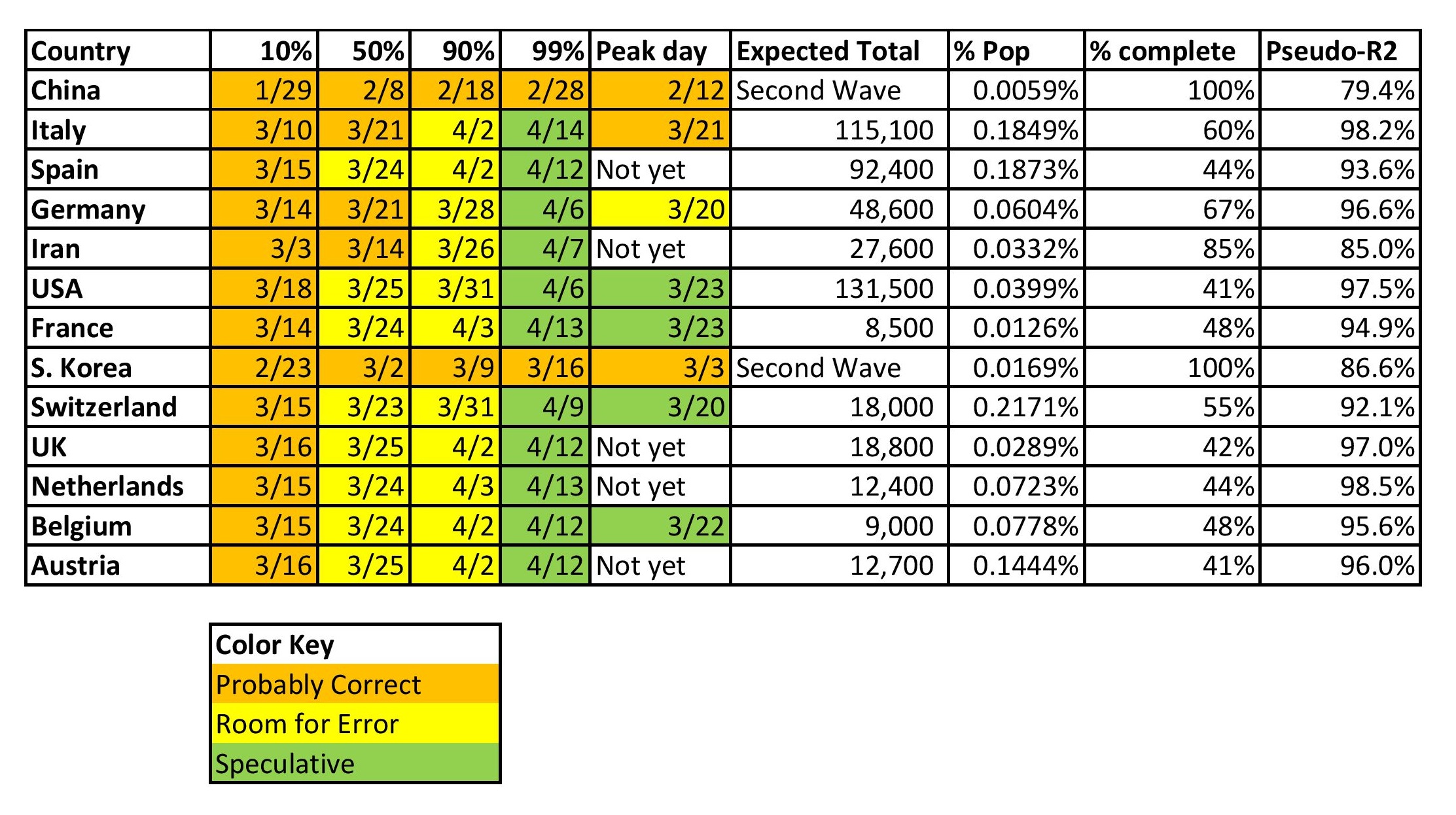
Interesting projections and a thought provoking analysis, with ample caveats. If your estimated numbers turn out to be close to the mark that would certainly be a welcome piece of good news for these trying times. And any good news relative to the COVID-19 virus is much better than the more often discussed bad news. For all our sakes, let’s hope the optimistic view proves to be the correct one, and we do get through the worst of this pandemic sooner rather than later.
Thanks for being willing to climb out onto the proverbial limb with this Post.
The analysis is good and reasonable. There are ?hot spots? needing extreme measures. Sounds like testing, personnel, testing kits are essential to achieve a positive outcome. Last I heard, these are not yet in abundant supply. Once they are abundant, we can reassess this. Until then, we are playing catch up, and not yet gaining ground in the USA. Time is of the essence, and progress will not be assured without these critical items/personnel.
Thanks Dave, this math nerd enjoyed looking at the analysis. I did find one aspect confusing though: the charts are all of cumulative totals, yet there is a sentence that says “When you look at the data of CHina and South Korea, you see how the epidemic went through the s-curve, and then has persistently high new cases thereafter.”
What do you mean by “high new cases”? Since it is a cumulative distribution, wouldn’t the new cases necessarily have to be persistently low? E.g., right now China is reporting on the order of 40 new cases per day. What am I missing?
On a side note, I am a bit confused as to why China has reported such low numbers ever since. Like you, I don’t think I trust the data. And also like you, I’m pretty optimistic as long as our leaders don’t continue to make the cure worse than the disease.
After the attack on Pearl Harbor in 1939, Admiral Yamamoto is reported to have said “I fear we have awakened a sleeping giant”. He was not afraid of Washington DC or the navy (which his attack had just obliterated). He was afraid of the US private sector turning its attention toward Japan.
I note that the NIH, CDC and WHO all dropped the ball on this cv-19. After dropping the ball on ebola, SARS and other disease outbreaks. After Ebola, the NIH got themselves a fancy new headquarters and elaborate security to keep taxpayers out. They had a parade for transvestites, and promoted gay lifestyles — neither of which has anything to do with their reason for existing.
Now another virus outbreak, and these wokester bureaucrats have no stockpile of respirator masks — not for transvestites, not for gays, not for “normal” taxpayers… they didn’t even stockpile masks for emergency room medical personnel.
Tens of billions of taxpayers dollars wasted year after year after year — and they don’t know how to contain this cv-19 outbreak anymore than the earlier ebola or SARS outbreaks. The only suggestion is to isolate, but all OUR taxpayer money was wasted on a fancy HQ building and wokester nonsense.
As with Pearl Harbor and countless other incidents, it is the private sector that is stepping up and doing what the useless bureaucracy cannot and/or will not. I have witnessed neighbors who rarely spoke in the past, suddenly helping one another. Private businesses are scrambling to enable work from home arrangements — its not all smooth sailing but its happening. Religious groups are doing more frequent checks on the elderly. And when the useless government needed more respirator masks, they turned to 3M and duPont corporations to do what the NIH and CDC simply refuse to do.
We have abandoned military bases all over the USA. Massive tracks of land that could hold emergency stock piles for pandemics, hurricanes, forest fires, etc. Most of these bases have huge runway for aircraft and/or freight train access. We the taxpayers already own these facilities. The taxpayer dollars we currently waste on NIH bureaucrats and their fancy headquarters could easily pay for supplies to be stockpiled.
Again and again, this nation faces problems and our bureaucrats let us down. Again and again, the private sector steps up. Time to shut down the NIH and CDC — use our tax dollars to benefit the public instead of the bureaucrats
Except that the attack on Pearl Harbor was in 1941. Also, Yamamoto’s words are almost certainly apochryphal and possibly a plant of US counterintel. Other than that, I think your sense of the historical moment closest to the present moment is not wrong. It is a crisi period of 1940, 1860 and 1775 levels.
That which governs least, governs best…………..
I don’t want to get into a political debate, but I would point out to Greg that the Pearl Harbor attack took place on December 7, 1941 (not 1939). The rest of his comment has equal validity.
However, David, I’m a math nerd, so I have some questions and comments. I’ve redone the analysis, probably with a different data set, and including data to March 26 (at midnight GMT) (https://www.worldometers.info/coronavirus) I get a maximum of about 191,500 for first wave infections, rather than the ~ 130,000 you get. That’s probably not material. At stage if the estimate is accurate within a factor of 2 you are doing well. However, your model is predicting a total infection rate of ~2 per 1000 for Italy, but only 0.5 per 1000 for the USA. What is the USA doing, or what are its characteristics that explain the difference? Population density might be one factor but my perception is that Italy reacted more quickly and more resolutely to infection.
Also, I applied the model to Canada (i’m Canadian) and the maximum first wave is about 35,000 or a rate of 1 per 1000, and our population density is even lower than that of the USA.
So, while the data seems to fit the models really well, I’m struggling to find a logical explanation of the different results for different countries.
My final point is that most, if not all, the countries you have looked at have followed relatively similar reactions – increasingly draconian social distancing measures that were arguably a couple of steps behind where they should have been. However, you,and President Trump, are arguing for some targeted relaxation of these measures, much earlier than the other countries. This suggests to me that the US will have both first wave and second wave effect at the same time and this model will cease to fit the data well. However, we shall see.
Thanks for sharing your thoughts on this.
Yup, the Pearl Harbor attack was in 1941, not 1939, as FWBM stated from atop his high horse. Since we are sharing, my family is from continental Europe, and for us the war started in 1939. We were still running for our lives in 1941.
Like so many other involuntary immigrants, my parents looked at Canada and the USA — and chose the USA. The quasi-socialism of Canada reminded us too much of what went wrong in Europe. The opportunities available in the USA were too great.
I also note that Japanese “immigrants” (or rather their children) are suing the wokesters at Harvard for blatant ethnic discrimination. Descendents of the Pearl Harbor attack don’t like the wokesters anymore than those of us arriving from Europe. The opportunities of the private sector is what people emigrate to the USA for, not big government.
While FWBM is trapped in his pedantic minutea, I would point out that the quasi-socialist epicenters of the USA (NYC and San Fransisco) are also the virus epicenters. The virus first made its appearance in quasi-socialist China. For all FWBM’s allegedly superior math skills, he is what Nassim Taleb labeled “intellectual yet idiot” (IYI). FWBM’s obsession with his little math models blinds him to more obvious explanations — places where the crowd acts as a collective tend to get sick as a collective.
The private sector of the USA is going to come out of this stronger than before. Canadians like FWBM and EU advocates in the old country are going to resent us for it. Uncle Sam, as David points out, will have a greatly weakened balance sheet — the power of the purse will be weaker too no matter what Bernie and Pelosi do. Sure, they will make a lot of noise, and pseudo intellectuals like FWBM will cheer from afar, but it hasn’t mattered in the past and it won’t matter in the future. Without a strong balance sheet behind them, they will be forced into making petty criticisms about pedantic details.
FWBM got to correct me on the date of Pearl Harbor, I get to correct him on his socialist bent. And in the end, people like me will continue to subsidize Canadian health care, we will continue to welcome Canadian entertainers and hockey players seeking better opportunities under capitalism. The US economy will fix itself, despite Washington DC “helping”, and the IYI’s in the old country will resent us for it. So what? Plus ca change, plus ca meme chose (my keyboard is USA, so you will have to insert your own accents)
The war really started in 1937 with the second Sino-Japanese war.
Douglas — as clearly stated, my family was in Europe, not China or Japan.
Dave – as always, thought provoking analysis. However, in just a few days, you have doubled your forecast for US infections as the country has blown past your initial estimates. It seems likely to go on another week before peaking and with infection rates remaining in the 15%-20% per day range (down, ok, from 30%), the guesses have to be more like a factor of 2 to an order of magnitude higher than what you estimate.
This analysis, smart as it is, has something of the analyst “price target” about it – move it along the trend, but only AFTER it has blown through your previous target.